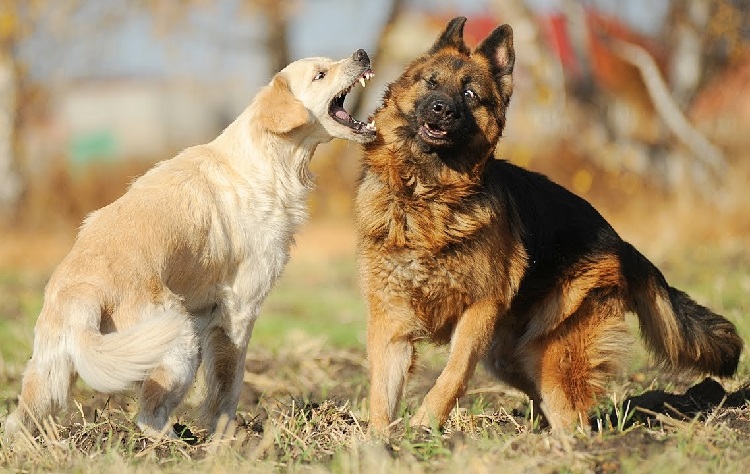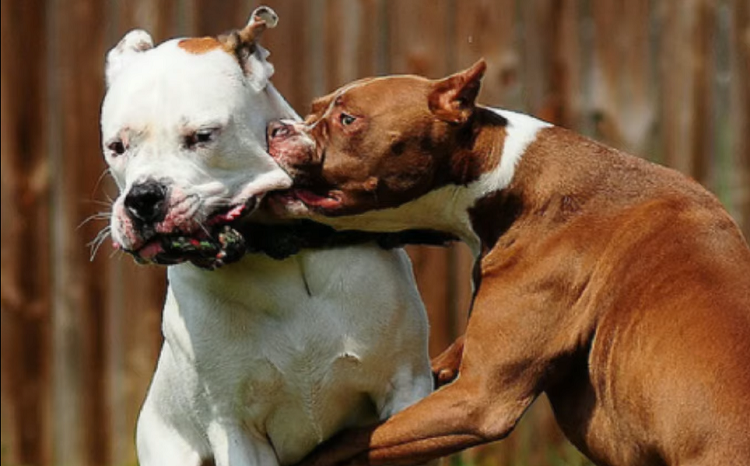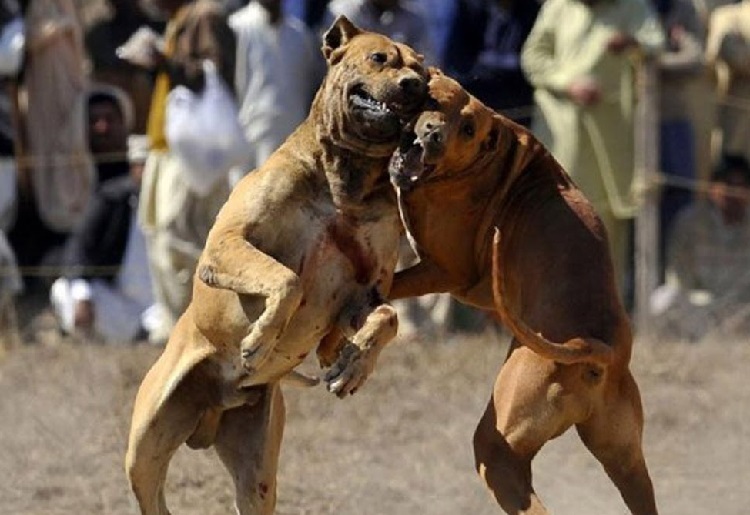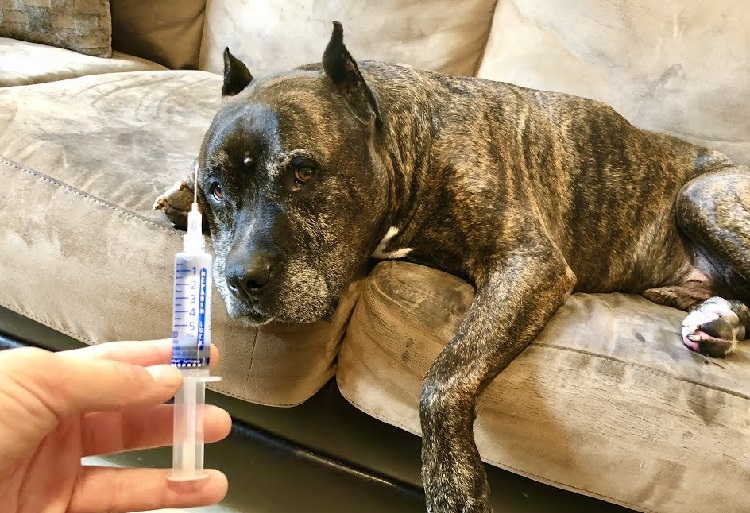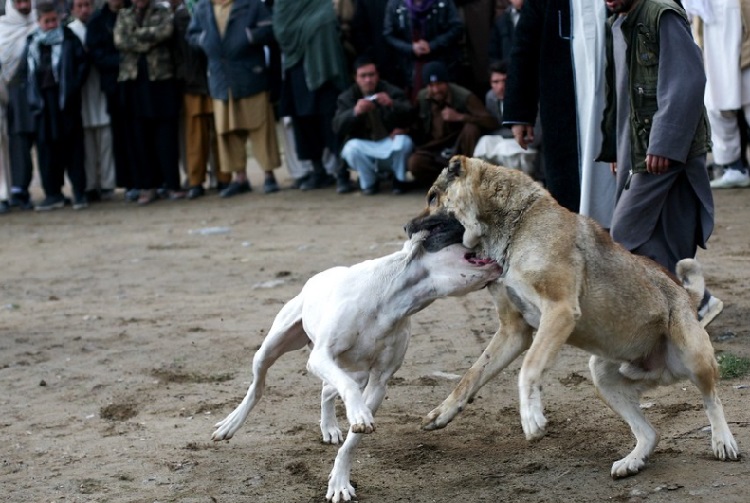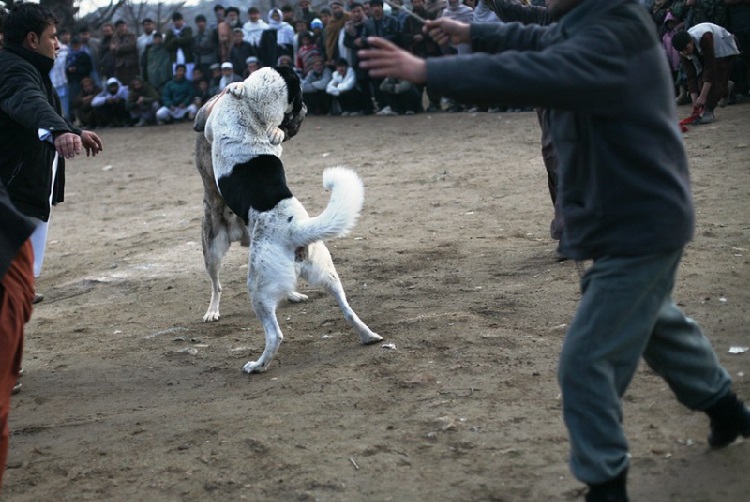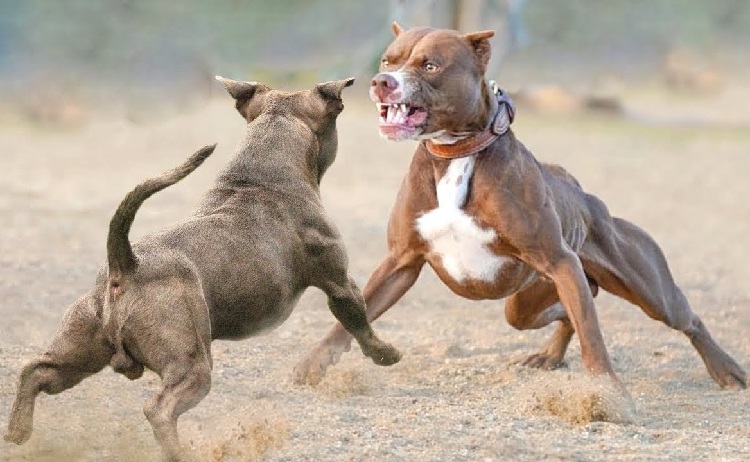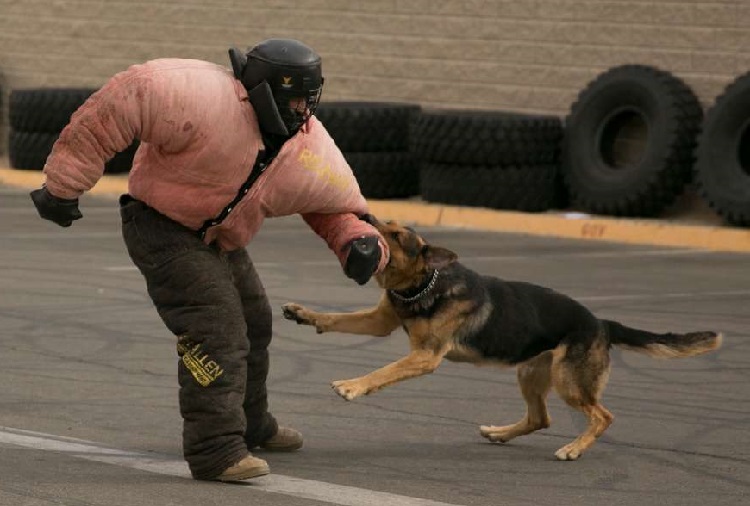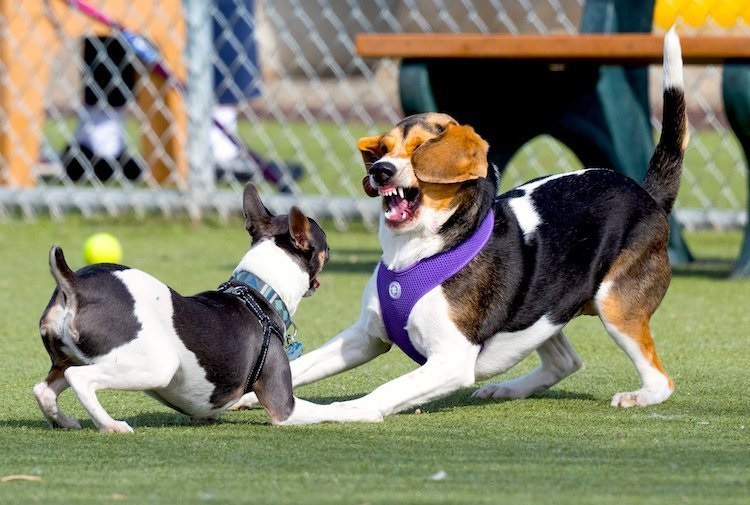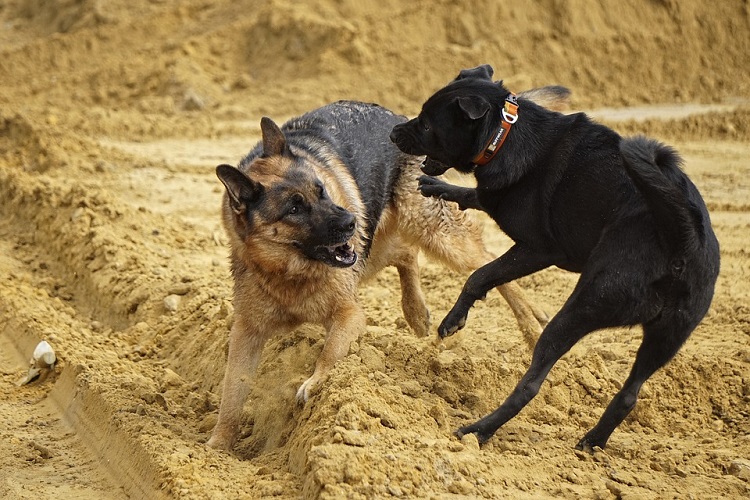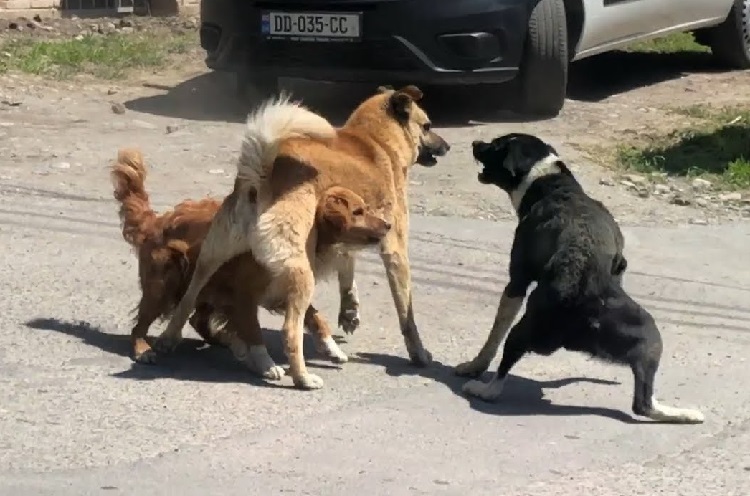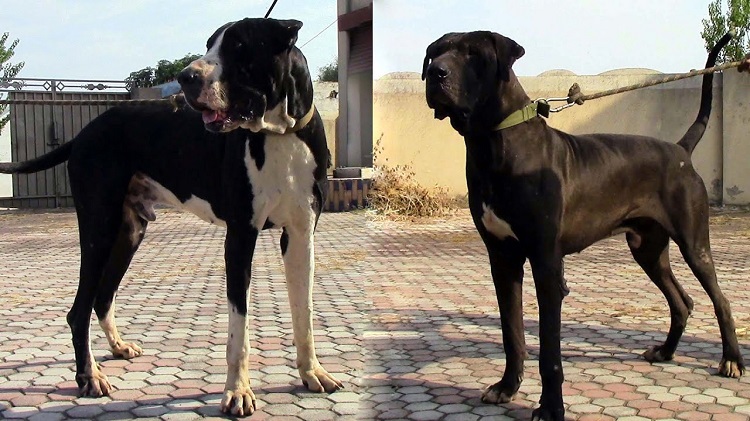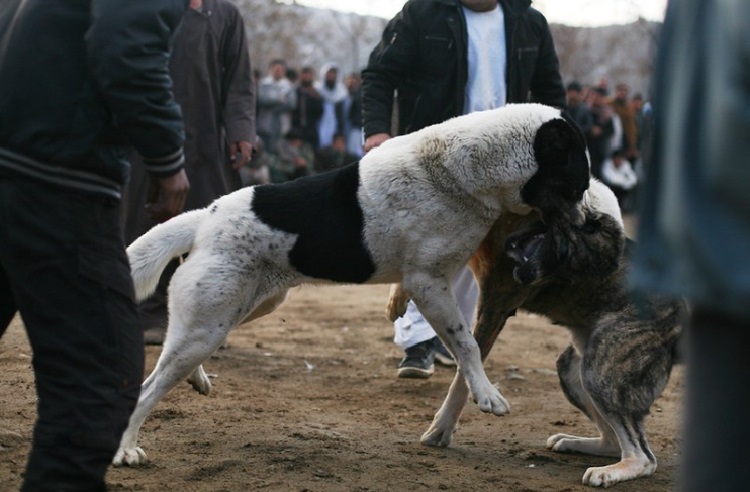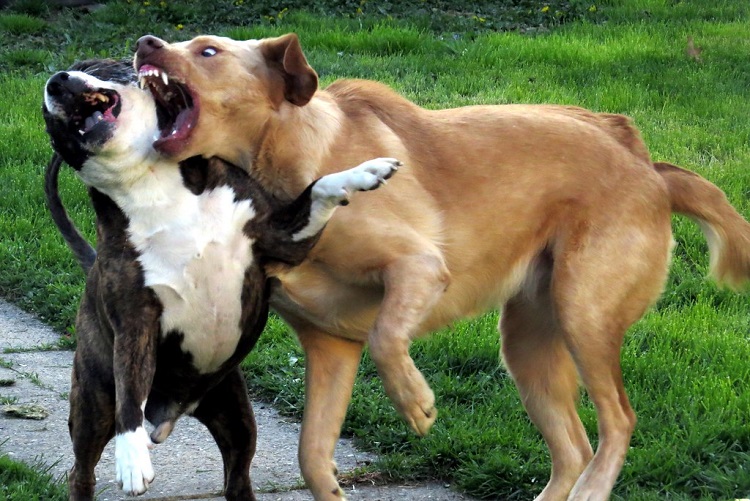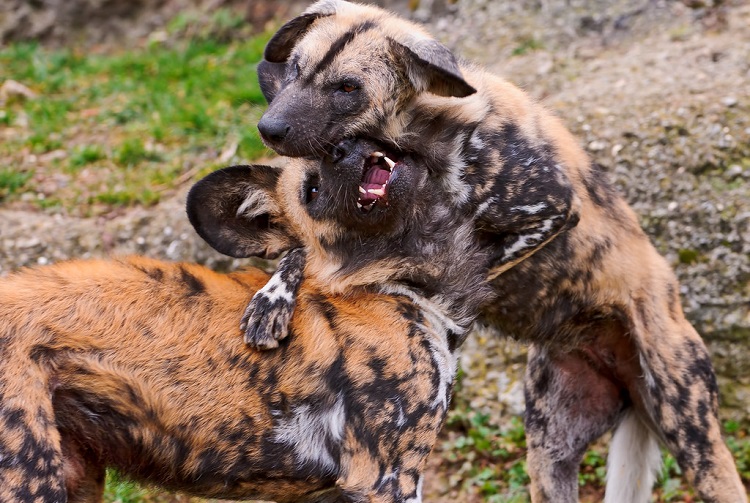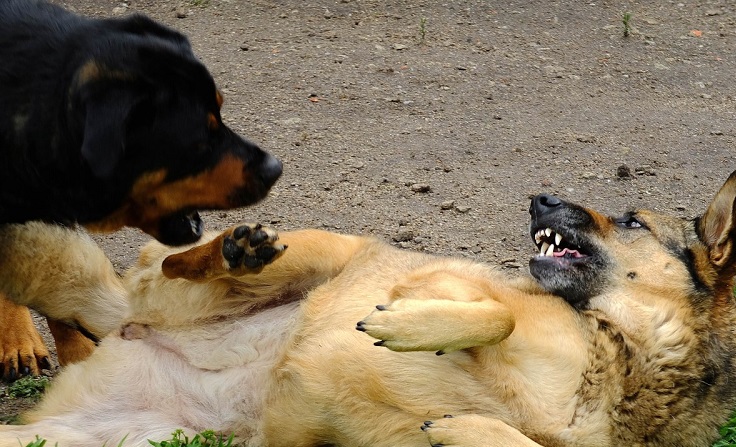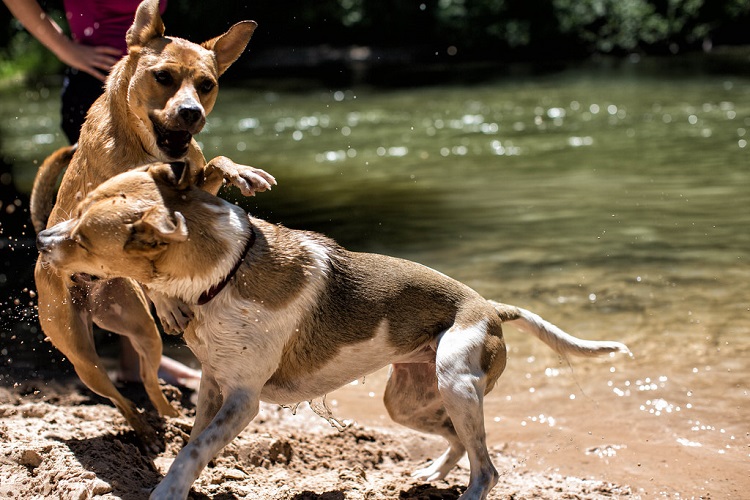Dog fighting, a brutal bloodsport, plagues communities worldwide. It involves forcing two dogs, typically bred and trained for aggression, to fight in an enclosed pit, often to the death, for the entertainment and gambling profits of spectators. This cruel practice inflicts unimaginable suffering on the animals involved, subjecting them to horrific injuries, both physical and psychological. Beyond the immediate cruelty, dog fighting fuels a network of related criminal activities, including animal abuse, drug trafficking, and illegal gambling. This overview examines the global scope of this barbaric practice, exposing its dark underbelly and the urgent need for its eradication.
Dogfighting is a violent, cruel practice that perpetuates abuses beyond our wildest imaginations on dogs across the world. Consider one story, as told to a reporter in 2003:
“…he found an animal with bite marks and dried scabs on her head. The dog had been doused with a flammable liquid, set on fire and flames had ravaged one-third of her body. Shriveled and burnt like a hamburger fallen through a grill, the pit bull’s skin was weak, but it clung to her bones.
When she sat down, the bones in her leg pierced through her charbroiled skin… The dog was no doubt a loser in a dogfight… and the owner expressed his anger by setting her on fire.” (Adam Gibbs, Illegal Dog Fighting Rings Difficult to Catch, Daily Kent Stater, February 18, 2003.)
Stories like this can be told about thousands of dogs every year, to the dismay of people who wonder how such cruelty could continue to exist. But exist it does, and the only way to stop the practice is to educate ourselves and others in the hopes that widespread awareness will eventually halt dogfighting for good.
What Is Dogfighting?
Dog fighting is the practice in which dogs who have been bred, conditioned, and trained to fight are forced to engage each other for spectator entertainment and profit. Dogs endure brutal torture and are routinely exposed to horrible conditions in order to encourage the violent behavior needed for these fights.
It is extremely common for both dogs to suffer from deep puncture wounds, blood loss, broken bones, and other gruesome injuries before one dog eventually succumbs and the fight is declared over.
When dog fights occur in rural areas, they tend to be carefully organized and staged covertly, while urban street fighters generally use more spontaneous methods to avoid detection by law enforcement.
Dog fighting generates obscene profits from stud fees, admission fees, and illegal gambling, and the practice is closely linked to illegal drugs, gang activity, and other forms of violence.
History of Dogfighting
As with many other cruel practices, dogfighting is assumed to have its origins in the Roman Empire. When the Romans invaded Britain in 43 A.D., both sides brought fighting dogs to the battlefield as weapons.
The Romans were impressed with the British breeds’ ferocity and battle readiness and began importing British fighting dogs for use in times of war.
Because their cultural appetite for violence was practically insatiable, the Romans started using fighting dogs for public entertainment as well. Massive crowds would gather in the Colosseum to watch gladiator dogs (typically English Mastiffs) pitted against other animals, such as wild elephants, lions, bears, and bulls.
By the 12th century, baiting – the practice of releasing fighting dogs into a ring with chained bulls and bears – had gained widespread popularity, particularly amongst British aristocracy. This popularity led to a drastic decline in the bear population, so fighting dogs were increasingly pitted against bulls.
Bullfighting became such a common practice that people preferred to eat meat from a bull who’d fought, as the abuse it had withstood was thought to make the meat more tender.
All baiting activities were officially outlawed in England by the Humane Act of 1835. Unfortunately, following the law’s passage, dog-on-dog combat emerged as the cheaper, legal alternative. People began cross-breeding dogs to create a fast, agile, and vicious fighting dog breed, which culminated in the Staffordshire Bull Terrier.
Bull and terrier crossbreeds, like the Staffordshire, were brought to America in the early 1800s. After the Civil War, widespread interest and participation in dog fighting began to proliferate, as evidenced by slews of historical documents, including advertisements for special train fares to large-scale dog fighting events.
Despite the proliferation of laws passed in 20th century America outlawing dog fighting, the practice continued to flourish underground. Henry Bergh, the founder of the ASPCA, was pushed to help revise New York’s animal cruelty laws in 1867, which made all animal fighting illegal.
Dog fighting was outlawed in all the states by 1976, (and it is now a felony offense in all 50), but it didn’t begin to receive serious law enforcement until the 1990s.
With the emergence of the internet making underground illegal activities much easier to promote and spread, dog fighting has seen a recent resurgence in the last few decades.
Facts About Dogfighting
Animal Suffering and Dogfighting
Dog fighting is an unthinkably cruel practice, inflicting unspeakable torture on animals that have the unlucky fortune of belonging to a certain breed. Training methods involve torturing puppies, keeping them isolated from other dogs on short, heavy chains that cut into their necks.
Many are taunted, drugged, and starved in order to trigger extreme survival instincts and encourage aggression. (We will go into further detail on training later.)
Typical injuries found on fighting dogs include severe bruising, deep puncture wounds, and broken bones. Dogs abused in fights often die of blood loss, shock, dehydration, exhaustion, or infection, and if they aren’t lucky enough to die during the match, they are left to suffer for hours or days without treatment.
These poor dogs are known to keep fighting despite severe, incapacitating injuries, and horrifying accounts of wounded dogs refusing to give up are everywhere. Losing dogs are often discarded or killed using a variety of techniques for further “entertainment,” like drowning, strangulation, hanging, gunshot, or electrocution.
What Happens at Dogfights?
There are two main types of dogfights: almost spontaneous bouts that tend to occur in urban areas, and those that are carefully organized and planned using clandestine methods.
Regardless of the setting, there are often strict rules of engagement. Two dogs are put into a square pit, accompanied by their handlers and a referee. The dogs are released to attack each other at a command, at which point spectators place bets on who they think will win.
The dogs fight until one of them makes a “turn,” which is defined as turning the head and shoulders away from their opponent. Once the referee calls the turn, handlers have to pry the dogs apart, sometimes needing “breaking sticks” to force the dog’s mouth open.
The handlers once again release their dogs, and the dog who made the turn must “scratch” to his opponent – which is defined as crossing the scratch line drawn in the center of the pit and engaging once more. If the dog refuses to scratch, it is the loser, but if the scratch is completed, the fight continues.
The fight ends in one of four ways: a dog fails to scratch, the owner calls the fight (which is unlikely, as it’s a massive loss of money and pride to do so), one or both dogs die, or a dog “jumps the pit” (escapes). A thorough, if dated, research study exploring the specifics of dog fighting will give you goosebumps!
Promotes Criminal Activities
Like other forms of animal cruelty, such as cockfighting, dogfighting is often linked to a number of other crimes like illegal gambling, drugs, gang activity, and even murder. Professional fighters breed generations of skilled “game dogs” and take great pride in their dogs’ lineage.
These fighters generate vast amounts of wealth in stud fees and winnings from fights, and that money tends to draw violence. (One dog who was described as a particularly successful fighter generated $100,000 in stud fees in a single year.)
Within the gang community, fighting dogs are arguably the weapon of choice over firearms, as they’re more versatile and difficult to trace. Dog fights are also an ideal environment for drug distribution, and it goes without saying that illegal gambling and organized crime run rampant.
What is perhaps most disturbing (other than the cruelty to the dogs, of course) is that children are routinely exposed to dog fighting, inoculating them against callous violence and illicit practices.
In one article from 2004, a Chicago policeman said “In many neighborhoods where gangs are strong you now have 8-, 9-, 10-year olds conducting their own dogfights. Or being spectators at the fights people are holding.”
In the same article, one expert attests that gangs encourage this behavior because it helps to desensitize future violent gang members. “You want to find the perfect way to desensitize a kid so he’ll kill that anonymous gangbanger from three blocks over? Give him a puppy and let him raise it. Then let him kill it. I guarantee that will desensitize that kid.”
Fighting Dogs Breeds
The dogs most commonly used for fighting, at least in the United States, are generally known as “pit bulls”. That category encompasses several distinct breeds, such as Staffordshire terriers, American Staffordshire terriers, American bulldogs, and American pit bull terriers.
These breeds are descendants of a carefully managed program by past dogfighters to develop a dog that would encompass specific traits. They wanted a large, low, heavy body with a powerful build, a strongly developed head, and a formidable jaw with tremendous bite strength.
The bulldog fit the bill perfectly and was a successful fighting breed during the bear- and bull-baiting era. However, for dogs fighting dogs, they also wanted the speed, aggression, and agility of a breed with “highly developed gameness,” so they crossed bulldogs with terriers, and voilá: the modern fighting dog was born.
Amongst those breeds mentioned above, the American pit bull terrier is unique and highly desired, due to its absence of threat displays when fighting.
The amalgamous category of “pit bulls” are preferred for their capacity to fight to the death, whereas most other dogs retreat once they have exhausted themselves. They’re also genetically predisposed to inflict maximum damage on an opponent, and once incited do not respond to natural signals to cease fighting.
And finally, they’re remarkably gentle and fiercely loyal toward humans; they will withstand considerable abuse and neglect at the hands of their owners and will remain loyal to the end.
Worldwide, there are many breeds preferred that vary based on geographical location. Some popular fighting breeds include the Akita Inu, the Boston terrier, the Bully Kutta, the Ca de Bou, the Dogo Argentino, the Gull Dong, the Tosa, and the Neapolitan Mastiff.
Upbringing and Training of Fighting Dogs
All fighting dogs are conditioned from a very early age to develop what dog fighters refer to as “gameness:” a dog’s willingness or desire to fight and continue despite injury or fatigue.
Primarily, fighting dogs are kept in isolation from other animals and people. They are usually kept on short, heavy chains that restrict movement but help to build muscle and endurance.
Some even put weights on the chains, so the dog is under additional strain to merely stand. These chains usually cut into the dog’s tender skin around its neck, creating open wounds to suffer from before they’ve even had a fight.
According to PETA, some dogfighters train dogs by forcing them to tread water in pools; run on a treadmill while a caged rabbit, cat, chicken, or other even stolen pets are dangled in front of them; or hang on with their jaws while dangling from “spring poles” (essentially a chain baited with meat.)
Some dogs are injected with steroids, have their teeth filed to points, ears docked (so another dog can’t latch onto them), and it’s even a known practice to add roach poison to their food so that their fur will taste bad to other dogs.
Puppies are subjected to a careful screening process to cull those who won’t be successful fighters. They will have their first “rolls” or “bumps” — practice fights — around the age of one to test for aggression.
At around 2 years of age, fighting dogs are subjected to “game tests” in which they are pitted against older, more experienced animals.
Street fighters have been known to expose their dogs to substances such as gunpowder, hot sauce, or other damaging irritants during training sessions in attempts to increase aggression.
In order to breed the most successful fighters, female dogs are strapped down on “rape stands” to prevent fighting while males impregnate them.
Societal Aspects Associated With Dogfighting
In 1998 researchers Evan Forsyth and Rhonda Evans interviewed 31 professional dogfighters and attended several dog fights in the southern United States to try and better understand the lure of dog fighting.
They found that the bloodsport attracted working-class men because it validated their masculinity in a society that lacked many opportunities for upward mobility. Those from the higher classes merely enjoyed the thrill of the fight and a challenging hobby that offers hefty financial rewards.
More recently, dogfighting has become prevalent in gangs as a way to desensitize children to the violence inherent in their lifestyle. It is also a way for rival gangs to obtain superiority while evading local law enforcement, as it’s a crime that leaves little evidence other than the poor, wounded animals.
People are also drawn to dog fighting because of the money they could win. The average dogfight could easily net more money than an armed robbery or a series of isolated drug transactions, and stud fees can be an easy way to make a profit as well.
What Are Bait Animals?
Bait animals are animals used to test a dog’s fighting instinct during training. Frequently, bait animals are stolen pets such as puppies, kittens, rabbits, small dogs, and fighting dogs who have been deemed too passive to fight competitively.
Dogfighters will often seek out animals from shelters or “free to a good home” ads to use as bait animals as well.
To ensure they can’t fight back properly, many bait animals have their snouts muzzled or taped shut, or some even have their teeth pulled so the fighting dogs won’t get injured.
Bait animals are usually mauled to death, but if they are still alive after the training sessions, they are usually given to the dogs as a reward. (Unfortunately, bait animals are also a reality in illegal greyhound racing as well.)
Types of Dog Fighters
CNN in 2007 estimated that in the U.S., more than 100,000 people are engaged in dog fighting on a non-professional basis, and roughly 40,000 individuals are involved as professionals in the sport of dog fighting as a commercial activity. Most dogfighters fall into one of three categories: street fighters, hobbyists, and professionals.
Street Fighters:
Street fighters are most often associated with gang activity, and as such the fights tend to be far more spontaneous and unorganized. The bouts are usually conducted for money, drugs, or bragging rights, and occur anywhere they think they can get away with it.
Usually, street fighters have multiple dogs chained in backyards, garages, or basements, and they’re known to perpetrate some of the most serious forms of animal cruelty.
Hobbyists:
Hobbyists are basically street fighters who’ve decided to take it to another level. They fight dogs in organized fights and usually belong to an underground network of other hobbyist dogfighters with whom they compete. Unlike professionals, they usually focus their investments on a fewer number of dogs.
Professionals:
The professionals are the ones who take great pride in breeding generations of fighting dogs, charging exorbitant stud fees to breed their champions. They tend to own a large number of dogs, sometimes 50 or more.
There is an elaborate network of trade publications, like The American Warrior and Pit Bull Chronicle, which they use to advertise the sale of training equipment and puppies. Some professionals even operate on an international level, transporting dogs great distances to fight in locations where dogfighting is still legal (or where animal cruelty laws aren’t heavily enforced.)
Where Is Dog Fighting Legal?
Most notably dog fighting is legal in Afghanistan, where it is experiencing a massive resurgence after the fall of the Taliban. There, it is a common winter weekend pastime, especially in Kabul where the fights are public and often policed to reduce violence amongst the spectators.
In Japan, dog fighting isn’t banned at a nationwide level, but several prefectures (including Tokyo) have passed laws against it. The practice also seems to be practiced differently in Japan, as it evolved with different rules.
In the form known as tōken, dogs fight in a fenced ring until one of the dogs barks, yelps, or loses the will to fight, and matches are stopped if a veterinarian deems that it is too dangerous.
Russia has passed several animal cruelty laws, but dog fighting is still widely practiced.
While some laws against gambling exist, dogfighting itself is also legal in Albania, China, and Morocco.
Dogfighting; an Illegal Practice
As of 2020, dog fighting is illegal throughout the entire European Union, North America, and most of South America and Asia. Nonetheless, it is still commonly practiced in many places, due to lackadaisical enforcement or the inability to properly monitor and track perpetrators.
In the United States, dog fighting is a felony offense in all 50 states, the District of Columbia, Puerto Rico, and the U.S. Virgin Islands. Most states have also made it a felony to be a spectator at a dog fight, but some areas only consider it a misdemeanor.
The U.S. Animal Welfare Act, passed in 1966, makes it unlawful for any person to knowingly sell, buy, possess, train, transport, deliver, or receive any dog for the purpose of having the dog participate in an animal fighting venture.
Federal law also prohibits the use of the U.S. Postal Service for organizing or advertising anything related to an animal fighting venture.
It became a felony in 2008 to knowingly bring a minor to a dog fight, and in 2014 the Animal Fighting Spectator Prohibition Act was signed into law as part of the Farm Bill, making attending an animal fight anywhere in the U.S. a federal offense.
Animal Welfare Rights
The Animal Welfare Act (AWA) was signed into law on August 24, 1966. It is the only Federal law in the United States that regulates the treatment of animals in research, teaching, testing, exhibition, transport, and by dealers.
The AWA has been amended numerous times since its original passage to ensure the humane care and treatment of animals.
If Dogfighting Is So Widespread, Why Don’t More Cases Come to Light?
Dogfighting is an incredibly difficult thing to successfully detect, investigate, and prosecute. It operates in highly secretive circles, often in clandestine locations, and leaves behind little concrete evidence that can be used in court to prove someone’s involvement.
Even if they are reported, fights get cleared before local law enforcement officials can be on the scene, giving those involved plenty of time to disperse and avoid capture.
Additionally, investigations into dog fighting circles are difficult, dangerous, and expensive, and many places are forced to prioritize other crimes. There is the added cost of caring for the dogs when an operation is successful, which also limits prosecutors’ abilities.
That being said, there have been several significant successful dog fighting raids in the last twenty years that are encouraging for animal welfare activists. In 2009 the ASPCA participated in one of the largest raids in U.S. history, rescuing over 400 pit bulls across eight states and resulting in 26 arrests.
What You Can Do To Stop Dogfights?
Ways To Spot Dogfighting
Identifying a dogfighting operation – particularly those of hobbyists or street fighters- can be extremely difficult, but there are some signs you can look for:
- A large number of dogs, particularly pit bulls, being kept in one location.
- Multiple dogs in one location that are chained and seem unsocialized.
- Dogs with scars on their faces, front legs, and hindquarters.
- Dogfighting training equipment, such as treadmills, break sticks, spring poles, or heavy chains.
- Heavy foot traffic at odd times or in odd places.
Reporting
The Humane Society of the United States has a standing reward of $5,000 for information leading to a conviction of illegal dogfighting or other animal fighting.
If you suspect dog fighting in your neighborhood, alert local law enforcement. Do not ever attempt to confront people who you think are engaged in this dangerous activity.
Conclusion
Dogfighting is one of the most horrific acts perpetrated against defenseless animals, and we need to do everything we can to stop this practice.
Dog fighting, a barbaric bloodsport, persists globally despite legal prohibitions and ethical condemnation. Driven by profit and a perverse sense of entertainment, it inflicts unimaginable suffering on dogs forced to fight. This cruel practice necessitates continued vigilance, stricter enforcement of existing laws, and increased public awareness campaigns. Ultimately, eradicating dog fighting requires addressing the underlying societal issues that perpetuate it, including poverty, organized crime, and a lack of empathy towards animals. Only through a multifaceted approach can we hope to end this horrific exploitation and ensure the safety and well-being of these sentient creatures.

